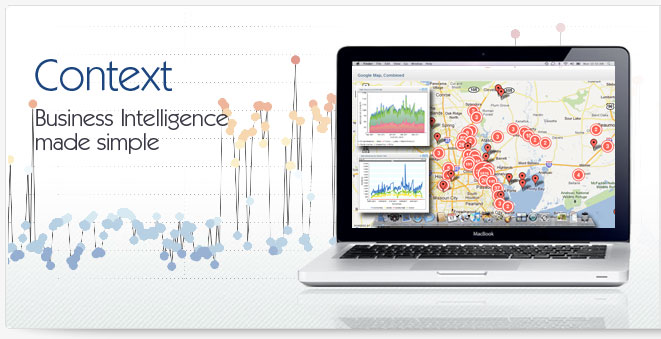Business Intelligence (BI)
The term Business Intelligence (BI) is often associated with a number of, typically related, products and practices. BI helps to define the practice of using one's own data - collected over time - to analyze performance, identify patterns and trends and make educated predictions about future performance. Business Intelligence (BI) is therefore a critical tool in the war chest of any business to help make more sound decisions and to assist managers in identifying risks and potential areas of reward for the business. Business Intelligence relies on the analysis of data that has been collected and stored over the history of the company's existence. Usually that data is stored in some form of data collection repository. It may be what's known as a data warehouse or it may even be part of the company's array of management systems - like Enterprise Resource Planning (ERP) systems. In fact, even the data held in a spreadsheet could be considered a data store for a business intelligence (BI) analysis, but more frequently the term refers to data that is stored in systems that leverage the Structured Query Language (SQL) on which enterprise software is commonly based.
The Growth of Business Intelligence (BI)
Over the past decade the rate of adoption of business intelligence (BI) has accelerated and is estimated by some analysts to be at a 30% per year rate for the foreseeable future. One reason behind this growth has been the continuous expansion of data that businesses store on a regular basis. By some estimates, businesses in the US alone generate as much data as all of humanity generated from the invention of writing to 2008 - EACH YEAR. With this level of growth even smaller businesses are having to employ business intelligence (BI) tools and practices to make sense of the information, especially in relationship to decision-making. Over the course of its history business intelligence has had a mixed reputation. On the one hand it is seen as invaluable in helping make strategic business decisions, but on the other hand, the costs associated with business intelligence (BI) are often perceived as exorbitant and out of the reach of all but the largest of organizations. In the past five years, however, technologies have become available that are beginning to change this perception.
The First Challenge of Business Intelligence (BI)
While the benefits of business intelligence are well documented, the costs associated with a deployment can quickly scale out of control. While there are many factors that can drive up the cost of a Business Intelligence (BI) deployment, two are often most critical: In order for a Business Intelligence (BI) deployment to be successful, the data that will be accessed must be prepared. The SQL databases that most organizations rely on for every day operational execution are designed and programmed to optimize single record execution. For example, an ERP application is optimized to make the search and editing of an invoice quick and simple. This results in a problem when these same systems are asked to provide reports based on thousands, often hundreds of thousands or millions of rows of data. In addition, data stored in these systems is often incomplete, riddled with errors and must be aggregated, manipulated, filtered and "cleansed" prior to use in a BI deployment; an expensive and time-consuming process.
Business Intelligence (BI) and SQL
The second costly aspect of any business intelligence deployment is the nature of reporting from SQL systems. Business Intelligence (BI) systems must be able to write reports in this SQL language in order to properly read data from the source systems, but this makes creating reports in the SQL language a time consuming, complicated process that is fraught with errors. In fact, creating queries in the SQL language can often lead to completely erroneous reports that provide information that is wildly inaccurate. For this reason, business intelligence has historically been the expertise and focus of dedicated individuals within the organization - typically in IT - whose only job was to use highly complex BI tools based on the SQL language.
Business Intelligence (BI) Comes of Age
The biggest challenge of business intelligence (BI) has always been focused around the two core problems mentioned previously: Preparing data for reporting and creating reports in the complex SQL language. New tools have become available in the past few years, however, that are beginning to change this. Most of the work until now has been done on the "front-end" of the problem - the reporting end - where the goal has always been to create tools that can be used by business users and that hide the complexity of the SQL language. New business intelligence (BI) products have come to market in the past five years that have focused on the needs of the business user, creating 100% drag-and-drop layers that users interact with to create reports. These new systems in turn translate the drag-and-drop operations into SQL commands that then sent to the source data systems for reporting. This change has been revolutionary to the adoption of the business intelligence (BI) and is, in large part, a key factor in the growth of the industry. The BI industry still has a lot of maturing to do, but with revolutionary new tools and the ability for users to interact with their data in easy to understand, easy to learn methods, the challenge of grappling with the ever-growing mountains of data is suddenly becoming less daunting.
|



